

 Best of Perú
Best of Perú



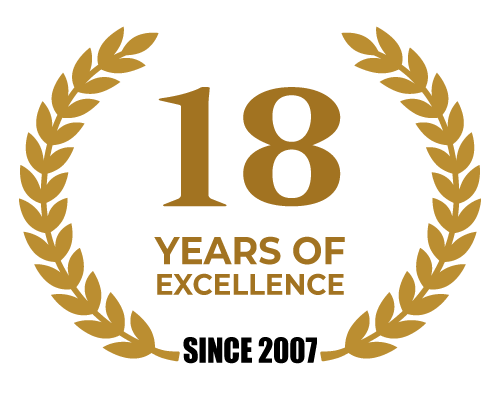 CREATING AUTHENTIC TOURS IN PERU
CREATING AUTHENTIC TOURS IN PERU
Titicaca Lake is known worldwide as one of the main attractions for any traveler who wants to visit Peru. Puno is the city that serves as the gateway to the many and varied tours on Titicaca Lake. Therefore, together with the experts from Andean Great Treks we have prepared this wonderful trip that you cannot miss.
In our tour you will visit the Uros Floating Islands. There are approximately only 62 artificial islands that still exist, these are made from totora reed which is abundantly found in Titicaca Lake, each island home to communities no larger than 6 families. A visit to the floating islands is a window into a survivalist culture, one that has existed since pre-Inca times. They still have their ancient ways of hunting fish and birds as their source of livelihood.
Taquile Island stands in the middle of the emerald green waters of Titicaca Lake. One handicraft product that stands out among the rest is textiles. These are weaved and knitted with local materials . Women do all weaving while the men do the knitting. The most popular product is the chullo hat, a type of beanie with ear flaps.
Titicaca is the highest navigable lake in the world, with a surface elevation of 12,500 ft (3,810 m). The city of Puno sits at around the same elevation, meaning that altitude sickness is common. To avoid this drink plenty of water, avoid alcohol, and eat a high calorie diet.
Our tour begins with pickup from your hotel in Puno at 7:00 a.m., for transfer to the port of Lake Titicaca. At 7:20 a.m. We leave for the floating islands of Los Uros, after 1 hour, we will disembark on these islands built by their own inhabitants with reed reeds, which grows in Lake Titicaca itself. After listening to some explanations from the guide and the island’s own inhabitants about their way of life, we will have time to sail around the lake on a reed raft and take some photographs. Later we will board our motor boat again to the island of Taquile, the navigation lasts 1 hour. Upon arriving in Taquile, the inhabitants will welcome us with their songs and typical music. From the base of the island we must ascend a beautiful stone path, which at certain distances is adorned with stone arches, and in the gardens you will be able to see the beautiful Kantu flowers of fuchsia, yellow color. Also depending on the season you visit, this place is very impressive with its potato, corn and quinoa orchards, which contrast with the blue color of the sky and Lake Titicaca.
At noon we will visit a typical restaurant where we will have lunch; In the afternoon we will go down to the other end of the island where our boat is waiting for us, which will bring us back to the city of Puno where our tour will end around 5:00 pm.
 warm jackets
warm jackets
 Hydration bladder
Hydration bladder
 wool socks
wool socks
 camera
camera
 scarf
scarf
 first aid kit
first aid kit
 hiking shoes
hiking shoes
 Dry bags
Dry bags
 Trekking Poles
Trekking Poles
 sun cream
sun cream
 Snack
Snack
 sun hat
sun hat
 bathing suite
bathing suite
 rain coat
rain coat
 Sandals
Sandals
 insect repellent
insect repellent
 Passport
Passport
 Down Jackets
Down Jackets
 toilet paper
toilet paper
 daypack
daypack
 Wool cap
Wool cap
 head lamp
head lamp
 gloves
gloves
 sun glasses
sun glasses
 cap
cap
 extra cash
extra cash
 Trekking pants
Trekking pants
Lake Titicaca is a large body of water in the South American Andes. Its waters extend across the international border between southeastern Peru and western Bolivia. The closest cities to the lake are Puno in Peru, and Copacabana in Bolivia.
Resting on the shores of Lake Titicaca in southeast Peru, Puno is a mere 5-hour bus ride from La Paz, Bolivia (132 miles, or 213 kilometers), located on the eastern side of the lake. The city is the capital of the synonymous highlands region, which holds importance for its agricultural and livestock industries. As a matter of fact, the biggest alpaca genetic reserve can be found while visiting Puno.
While many travelers associate high altitude cities in Peru with Cusco (3400 masl), Puno is situated some 400 meters above its northwestern neighbor. In fact, Lake Titicaca, considered the highest navigable lake in the world, rests at 12,510 feet (3,812 masl) while Machu Picchu stands at 7,972 feet (2,430 masl). While visiting Puno you will likely experience the thinnest and driest air in all of your time in Peru, so be sure to take it easy upon arriving by walking slowly, eating light and drinking plenty of water.
The Titicaca National Reserve is located in the Puno region of southern Peru. The lake itself is almost the largest South American lake. Known as “Lago Titicaca” in Spanish, it sits on the border between Bolivia and Peru. The immense freshwater pool covers some 3,200 square miles (8,300 km²) and dates back 60 million years. Following a powerful earthquake, the Andes mountain range split in two, leaving behind a huge basin. In time, water from melting glaciers filled the hollow and Titicaca was formed.
More than 25 rivers empty water into Lake Titicaca, the largest of which is the Peruvian river Ramis. The lake is also divided into two smaller bodies of water by the narrow Tiquina Strait. The southeast Bolivian body of water is the smallest, while the largest sits northwest, in Peru. Visitors can delight in exploring the 41 natural islands that emerge from Titicaca’s waters.
Long before the rise of the Inca Empire, the indigenous Kolla people inhabited the high plains of southern Peru. Between 900 AD and 1500 AD the Kolla possessed a vast territory. The capital of their immense kingdom, Hatunqulla, lay 21 miles (34 km) north of modern day Puno. The Kolla are known for their construction of tall, cylindrical burial tombs, known as “chullpas”. Sillustani, an archaeological site close to Puno, comprises many of these striking structures.
Lake Titicaca was a sacred place for the Inca people. They believed that Huiracocha, the creator deity, was born from the depths of its waters. He created the sun, moon, stars, and mankind by breathing life into small stones. According to myth, the immense body of water was also the birthplace of Inca royalty. The first Inca governor, Manco Capac, and his wife, Mama Ocllo, are said to have emerged from the lake. This story of creation is still widely recounted throughout the Andes today. It is one of the many mythical tales that highlight the unique heritage of the region.
In the 16th century Spanish settlers conquered the Inca civilisation. The town of Puno quickly became an important port and mining hub for silver and various minerals. The city was in fact originally named “San Carlos de Puno”, in honor of Spain’s King Charles II. During this period, Catholic missionaries began to settle and convert locals to their religion. This Christian influence resulted in the emergence of strong superstitions in the region. Lavish celebrations venerated holy Catholic saints, while native Quechua traditions still lived on.
Legends of an elaborate, gold-rich city at the bottom of Lake Titicaca have circulated for centuries. Tantalizing rumours of submerged Inca treasures lured Spanish conquistadors to the lake in the sixteenth century. It wasn’t until the year 2000, however, that any evidence of these watery ruins was found.
During a series of more than 200 dives, a team of international scientists discovered a large complex of ruins. The underwater city comprised religious temples, agricultural terraces, and roads. Historians estimate that the structures pre-date the Inca culture and could be 1,500 years old. There are an astounding 24 submerged archaeological sites. It is likely that the Aymara people constructed the city on dry land and it was later flooded. The Bolivian government has announced that it will open a museum showcasing the Lake Titicaca underwater ruins to the public.
Like other parts of Peru, Puno enjoys two seasons: rainy and dry.The southern high plains, or altiplano region, of Peru has a semi-arid climate. Temperatures during the day are consistent throughout the year, with particularly warm afternoons. Once the sun has set, however, expect bone chilling nights. Despite low temperatures, the lake does not freeze and snowfall is unlikely.
Dry season brings hours of sunshine to the Lake Titicaca area. The lake’s high elevation means that UV rays are strong, so sun protection is a must. Although temperatures are warm, strong winds often blow across Titicaca’s plains during these months.
During the wet season, Lake Titicaca is often shrouded in mist and low-lying clouds. Visibility can be poor and rain is more likely. Although downpours do not occur daily, they can be heavy and accompanied by lightning, causing trails to close. The area experiences its highest rainfall in January.
Lake Titicaca welcomes the most visitors between June and August, at the peak of the dry season. Days are warm and precipitation is low, but nights are freezing. For those wishing to avoid the crowds, April and May can be a good alternative. During these months immediately after the wet season Titicaca’s lush flora bursts into life.
Titicaca’s waters cover some 3,200 square miles (8,300 km²). It is the second biggest lake in South America, behind the Lake Maracaibo.
41 natural islands rise from the waters of Titicaca. Some are densely populated, while others remain uninhabited. There are between 60 and 100 man-made Uros Islands.
Lake Titicaca is a high elevation destination, higher even than Cusco. Puno, the closest Peruvian city to the lake, sits at around the same elevation as the lake itself.
At its deepest point, Titicaca plunges to around 900 ft (274 m). The average depth of the lake is between 450 ft and 600 ft (137 m to 183 m).
The meaning of “Titicaca” is disputed by etymologists, but most translations agree upon a definition similar to “Puma Mount”. The name derives from Quechua, a language dating back before the Inca culture. Titi is the word for “puma”, and caca can be translated as “rock” or “mount”.
While it is safe to swim on the lake (far from the bay of Puno and beyond the floating islands), it is not recommended to swim because the water is so cold. The average temperature is (55F) 14° Celsius and the outside temperature might fluctuate from 32F – 70F or (0 to 21 degrees C) within 24 hours. When the sun shines, the outside temperature is warm but the water in the lake is always cold. Yet some brave people have plunged into the water and enjoy a short swim!
Two to three days is sufficient time to explore the lake area’s main attractions. Those wishing to relax can extend their Titicaca trip to include a slower-paced island getaway on Isla Suasi. If arriving from lower elevation destinations (e.g. Arequipa or Lima), consider adding a day to your itinerary to acclimate.
Lake Titicaca is a high elevation location; higher than Cusco by about 1,300 ft (460 m). Mild symptoms of altitude sickness are common, including headaches, nausea, and loss of appetite. Each person responds differently to high altitude. Unfortunately there is no way to predict how seriously it may affect you.
As with all challenges, though, it is a good idea to work your way up in stages.Since you are taking in less oxygen at this altitude, your body needs time to adjust to be able to move about comfortably. Therefore, before you travel to Puno, it is best to ease into the elevation.Perhaps try spending a couple of days at a lower altitude in the Sacred Valley or Arequipa before moving on to Cusco or Colca Canyon.Then make your way to Titicaca.
Once in Puno, there are some simple steps you can take to also ensure a smooth transition: hydrate, breathe, pace yourself and drink coca tea. More specifically, drink plenty of water in this drier climate and inhale deeply and calmly to expand your lungs to their fullest.
In addition, slow your pace and take more rest breaks than usual. Also allow yourself some of the tried and true method of coca or muña tea leaves. You should also avoid alcohol. Talk to your doctor about preventive medication.
Motion Sickness
If you plan on taking an island hopping tour of Titicaca, motion sickness is a possibility. Waters can become rough, so bring medication if you are prone to nausea.
In Peru, the local currency is Nuevo Sol, while in Bolivia, it’s Peso Boliviano. Notes in local currency or US dollars can be withdrawn from banks in Puno using a UK credit or debit card. Money exchange offices exchange US dollars cash (few accept euros or sterling and the rate may be poor). In Copacabana, Bolivia, there’s a bank which offers advances on a Visa card and casas de cambio which exchange US dollars and Peruvian Soles. Commission rates are generally higher than in the major towns and cities.
Ideally the perfect length of an enjoyable and stress-free journey in the region is 3 days. The longer your stay the better chances you have to enjoy authentic connections with local culture. Of course, if you are short on time there are many great options for one to two day trips where you will have an interesting and memorable visit!
The Uro people ancestors were simple fishermen and bird hunters and preferred to remain isolated from the more advanced civilizations. When the Spanish chroniclers encountered the Uros by the end of the XVI century, the Uros people were still living on the lake in small reed-boats that they used as floating houses. Only in the early 60s, the Uros started to build small artificial islands with reeds for their homes. In the late 70s tourism started to develop and this activity has given the Uro inhabitants the chance to earn an extra income and to pursue better education for their children.
Nowadays, The Uro islanders strive for a better future for their children. Many families have been able to build small houses in the city. The young “Uro” can go to schools in the city and have access to a more regular education system. It is likely that they will not return to live on the “floating island”. In the meantime, tourism is an important source of income for the adult population in Uros and they keep their homes on the islands too. The days of this old community will most likely end with the next generation.
There are many possibilities to organize a beautiful and interesting full day in Puno. A sample of an interesting one day visit could be a kayak adventure at sunrise and visit the floating islands of Uros at a time when you will not conflict with the tourist crowds. After a nice breakfast on the islands you return to Puno. Before leaving the ranch, you can enjoy a traditional lunch. Then, you can go on to visit the archaeological site of Sillustani where you will enjoy breathtaking views of the Andean plateau and landscape. On the way back to Puno you will stop to visit a local family from the community adjacent to Sillustani site for a friendly cultural exchange encounter.
On every travelers’ to-visit list while in Peru, the city of Puno and Lake Titicaca offer a diverse range of accommodations for every budget. Here are some of our favorite places to stay while visiting Puno:
Only 50 m from Puno’s Main Square, Tierra Viva Puno Plaza offers rooms with free Wi-Fi and plasma TVs. The Cathedral and Jiron Lima Main Street are 50 m away. Bright and spacious, rooms at Tierra Viva have stylish furnishing and large windows. All of them have private bathrooms with toiletries. Some of them also have breakfast counters and balconies.
ust 5 minutes from the town of Puno and in front of Lake Titicaca, Xima Puno Hotel provides an ideal base for discovering Peruvian culture and exploring the surrounding areas. Rooms are simply furnished yet modern. They are all equipped with cable TV and private bathrooms. The hotel´s restaurant is open from early in the morning until late at night, and the grand fireplace in the lounge offers a great place for unwinding after a day sightseeing.
Casona Plaza Hotel Puno features comfortable rooms with free Wi-Fi in the centre of Puno, 7-blocks from Titicaca Lake. It offers a country-style wine bar filled with artisanal art, and complimentary parking. Casona Plaza Hotel Puno is conveniently located one block from the central Plaza da Armas and 2 blocks from the Cathedral. Guests can visit the ancient Chucuito Colonial ruins, 18 km away, or windsurf on the Lake. Rooms at Hotel Casona are decorated with wooden furniture and fresh flowers. All are equipped with air conditioning, cable TV, and coffee making facilities. Some rooms offer a private jacuzzi tub. A breakfast with tropical fruits, natural juices and scrambled eggs is served. Guests can enjoy regional cuisine and an extensive wine list at the restaurant, or make use of the room service.
Located in Puno’s historical main square, Hotel Hacienda Plaza de Armas offers rooms with private bathrooms and free Wi-Fi. Titicaca Lake is a 5-minute drive. There is free public parking nearby.Hacienda Plaza de Armas has rooms with carpeted floors, tasteful wood furnishings and flat-screen TVs. All private bathrooms offer free toiletries, marble fittings and baths. A full buffet breakfast with tropical fruits can be enjoyed daily at the restaurant.
On the edge of the lake, this inn offers Titicaca travel that is comfortable, clean, and catered. As well as providing space for conferences and events, they have a business center should your Titicaca travel experience include a little work along with play.
Due to its outstanding views from the rooms and from the Inkafe Restaurant Bar, this beautiful lakeside hotel is a Peruvian paradise. Furthermore, you might even find llamas happily grazing on the lawn.
Since it is part of a cluster of Casa Andina hotels, this Puno location delivers the same level of quality, care and comfort as its sister spots throughout Peru.
Located on the private island of Esteves, GHL Puno displays the beauty that abounds in Titicaca travel. Especially relevant is the quality of the accommodation and dining, which – as would be expected from such an lovely venue – is immaculate.
For remarkable luxury catering to a minimal number of guests, this boutique lodge really delivers. Due to its placement at the tip of a land mass, surrounded by the lake, it provides exclusivity and bliss.The facilities, food and service are unparalleled when it comes to your Titicaca travel experience.
This accommodation’s uniquely designed rooms are reason enough to stay at Amantica Lodge. Due to its clever indoor-outdoor architecture, every available vantage point of the lake has been put to good use. Guests are also provided with extreme comfort and privacy, perfect for any Titicaca travel adventure.
The highlands of Lake Titicaca are the home of small farms who produce mainly potatoes, fava beans, and Andean grains such as quinoa and amaranth. The local farmers also raise herds of sheep, llamas and alpacas.
Tip: We highly recommend eating lightly at night, especially your first night at this altitude, as some heavy foods can impact your body’s ability to adjust to the high elevations.
Therefore, signature meals in Puno include quinoa in different varieties, one is “pesque de quinoa” (a quinoa puré served with alpaca steak) or mazamorra de quinoa (a porridge of quinoa).
Another favorite is the Quinoa soup accompanied with beans, small potatoes, pieces of pumpkin and seasoned with local herbs like muña (a sort of Andean mint). The kankacho (baked lamb marinated with pepper and Andean herbs) and chicarron de alpaca (fried alpaca meat) are also highly recommended to try.
Introduced to the lake in the 1930s to create economic opportunity and boost local food supply, fresh trout dishes abound in Puno—and there’s nothing fresher than a ceviche de trucha. The exquisite pink meat of the trout is mesmerizing—almost enough so to make us forget that the invasive species is causing problems back in the waters of Lake Titicaca.
Every highland region in Peru is sure to have a corner store or street vendor selling the fermented corn drink known as chicha de jora. And yet, in no two cities will you try the beverage and experience the exact same taste due to varying methods and climates.
It is prepared from whole peeled barley, pork rinds, beans, peas. Served with potatoes, chopped mint. Salt and pepper.
Is prepared by boiling head of lamb with potatoes and whole potato flour, is served with parsley and salt to taste.
Prepared fish (karachi, mackerel, mauri), served with potatoes and whole chuños, muna, onion, garlic and chili.
A land base (curpas) with wood, then placed neatly geese potatoes and then burying them in the oven, after a while it opens and served with cheese or ground chili chaqo.
Prepared from mutton, pork or beef, seasoned with red pepper and other seasonings, served with whole potatoes and salads.
Prepared fish (mackerel and trout), is cut into pieces, and seasoned with garlic and salt, served with boiled potato, moraya, salad, chili and salt to taste.
Prepared from washed quinoa, served with milk and grated cheese is a semi-dry dish very palatable. Quinoa porridge. This dish is based on ground quinoa, served with milk and grated cheese.
Some of the best options for eating in Puno are hotel restaurants. Many hotel menus feature delectable local and Peruvian dishes, without having to travel from the lakeside into the city. For those wanting a change of scenery, the following restaurants offer quality cuisine and a welcoming atmosphere.
Mojsa is a distinguished eatery with a lovely balcony overlooking the main plaza. Patrons enjoy a menu of Peruvian dishes, such as grilled local trout, lomo saltado, and crispy cuy (guinea pig). A variety of pasta dishes also feature for those craving a more international taste.
Jr. Lima 635, 2nd floor, Puno
French-owned La Table del’ Inca serves well-loved Peruvian favorites with a French twist. Start with an order of sweet potato and squash soup. For a main dish, tempting options include lomo saltado (beef stir-fry), and quinoa risotto. Expect excellent service and impressive presentation.
239 Jr. Ancash, Puno
A relaxed option next to the cathedral, this cafe offers a huge variety of hot and cold sandwiches and salads. More hearty dishes such as alpaca steak and grilled chicken are also available. Order tequeños (pastry parcels stuffed with Andean cheese and served with guacamole) if you’re looking for a light bite.
Jr. Deustua 576, Puno
The daily folkloric dance show draws many visitors to this popular restaurant-pizzeria. Alongside Peruvian favorites, Balcones de Puno serves numerous pizza and pasta dishes. Go for the ceviche made with local trout for a more authentic option.
Jr. Libertad 354, Puno
No matter your Lake Titicaca lodging, Casa Andina Premium’s Alma is a great choice for all. Located outside of Puno’s center, Alma boasts lake views and a serene atmosphere. Recommended dishes include grilled chicken served with pear ravioli, and lamb with local kancacho sauce. Visitors can also enjoy afternoon tea and pastries daily.
Av. Sesquicentenario 1970, Puno
Since ancient times, the Lake Titicaca has been considered a sacred living spirit and it is the object of profound spiritual significance still today. This vast mass of water located at 12,400ft (3800m) above sea level has generated optimal climatic conditions allowing the raising and development of great civilizations since the 6th century (A.C) until the Inca occupation of the region. Moreover, some well-rooted legends point to Lake Titicaca as the origin of the great Incan Civilization. Wherever you go in the highlands surrounding the lake, you will appreciate spectacular views, and you will meet with local communities who are the custodians of ancestral wisdom and appreciative ways of life connected with the nature that surrounds the region.
At Lake Titicaca you can visit sites of archaeological or natural interest such as Sillustani, Cutimbo, Molloco, Pukara, Altarani (all are archaeological remains of important civilizations of pre-inca times) and unique eco-lodge in Suasi island where you can connect peacefully with the energy of the sacred lake Titicaca. You can also enjoy learning experiences with the local culturals, and get immersed in local communities on the islands of Amantani, Taquile, Tikonata, or the floating islands of Uros on the Peruvian side and Sun and Moon Island in the Bolivian side. There are also plenty of opportunities to hike around the beautiful peninsulas of Capachica and Chucuito and meet with local communities in Llachon, Capachica, Luquina, Karina, Copamaya, Choccoconire and Juli. In many of these communities’ local people offer simple but comfortable guest houses on a Homestay Tour where we can rest and eat delicious local food and participate in the lives of the locals.
Puno Cathedral
Located in the city’s main plaza, the cathedral was built in 1857 and ranks as a minor basilica. Also known as Catedral Basílica San Carlos Borromeo, the Andean Baroque structure has two towers flanking the entrance which, upon closer look, is surrounded by detailed stonework. While the interior is not as elaborate as other churches in Peru, there are paintings to admire and a domed altar space.
Mirador Puma Uta
For a singular view of the highland city and Lake Titicaca, head to this lookout point just 20 minutes by car from the city center. Just as many of the local reed boats display the feline’s head, this site is marked by a giant puma statue likely chosen as the Quechua words “titi” and “caca” mean puma and mount, respectively.
Less impressive but easier to get to by foot is the viewpoint Cerrito Huajsapata, located just a few blocks behind the main plaza.
Built of carved stone, this arch was erected in 1847 by locals in memoriam of those who fought for the nation’s independence in the battles of Junin and Ayacucho (1824). The project was solicited by General Alejandro Deustua, hence its name.
Located in the Independencia neighborhood (just north of Parque Pino, or seven blocks from the main plaza), the archway has gained some decorative elements along the years, such as the national shield and inscriptions that tell of its history.
Malecon Ecoturistico Bahia de los Incas
Stroll along this lakeside walkway for one last gaze across the still blue waters of Lago Titicaca. Less than 10 blocks from the city’s Plaza de Armas, you’ll stumble across the pre-Incan astronomic clock, intihuatana a name you may remember from or will soon come across at Machu Picchu.
The Four Churches of Juli
For a full-day trip outside of the city, head an hour southeast of Puno to reach what has become known as “the small Rome of South America.” There, in the remote town of Juli, you will witness some of the most impressive colonial churches in all of Peru, some of which have been turned into museums.
Uros Floating Islands
Man-made and yellow-hued, Uros floats on buoyant reeds and is definitely worth a stop so you can learn about how that floating happens. If you linger a little longer, you will also get to see the ornate weaving the local women craft to tell the story of Uros.
Taquile Island on Lake Titicaca
This island thrives in greens and florals with its lush plants and trees. Somehow even the water surrounding Taquile appears to take on a clear aqua hue at its edges, while the other islands do not. Here you will have an opportunity to learn secret uses for the plants and, should you experience a homestay on this island, you will be able to glean even further insights.
Amantani Island
Beige in color, this island produces an annual rotating harvest of potatoes from one side of the island to the other. This is just one of the snippets of information you learn while hiking to the highest point of the island to view the sunrise or sunset. In addition, if you participate in a homestay with one of the local Aymara families you will have a chance not only to test out those potatoes, but also learn about how the locals live their lives.
Sillustani
About 20 miles (34 kilometers) north of Puno City, on the banks of the Umayo Lagoon, lies this pre-Incan above-ground cemetery honoring the Aymara elite.
Llachón community – Capachica Peninsula
This Aymara community at the very edge of the Capachica Peninsula also offers a glimpse inside the lives of the locals through a homestay. In addition to embracing the food and culture of this community, you will have the chance to hike up to a vista at over 13,000 feet (4000 meters) and see all the glory that Lake Titicaca offers.
Chucuito village and Chucuito Peninsula
About 11 miles (18 kilometers) south of Puno City you’ll find this tiny pueblo best known as a result of its phallic stone structures. In addition to these, though, there is Chucuito’s rich colonial history, lavish construction and beautiful views of the lake.
Luquina community – Chucuito Peninsula
At the edge of the Chucuito Peninsula, a little over 30 miles (53 kilometers) east of Puno City, is Luquina Chico. This rural Aymara community offers homestay opportunities on the shore of the lake that is unparalleled, as it has not been as affected by tourism like the more frequently visited islands of Titicaca.
Amaru Muru
South of Puno City lies what some believe to be an abandoned Incan construction project. Therefore, the image itself is something to see and the stories surrounding Puerta de Hayu Marca (‘Gate of the Gods’) are definitely something to hear. But, most of all, to experience the mystery and energy firsthand is truly something unique.
Though seemingly worlds away from Peru’s capital city Lima (where the country’s sole international airport is located), Puno is actually quite accessible. Travelers have varied options to suit their taste and budget. The availability and ease of transportation has likely been a driving force of why visiting Puno is often done immediately before or after a trip to Machu Picchu.
The fastest option is of course by plane. A 1.5-2 hour flight from Lima to Juliaca (a city located in the Puno region) is followed by a one-hour private transfer or taxi ride to the city of Puno.
Flight durations:
Cusco to Puno
Comfortable bus tours from Cusco to Puno are a good option. Their buses travel to Puno from Cusco every morning at 6:50am, while they offer an itinerary of brief guided stops for exploration and eating along the way. In addition to visits to Andahuaylillas, Raqch’i, Sicuani, Abra La Raya and Pukara. The Inka Express tourist buses are very highly rated, so you will arrive in Puno by 5:20pm.
Other great options are Turismo Mer, Cruz del Sur, and Tranzela with a comfortable public buses that travels from Cusco to Puno. Furthermore, their trips leave twice a day at 8am and at 10pm and last six hours and 30 minutes.
Arequipa to Puno
The Cruz del Sur public buses leave Arequipa three different times every day depending on the type of bus you choose. This trip also lasts six hours and 30 minutes.
Chivay (Colca Valley) to Puno
4M Express travels to Puno from Chivay in the Colca Valley, leaving every day at 1:15pm and arriving at 7:30pm. This tourist bus travels more quickly than others of its class due to fewer stops.
La Paz to Puno
There are a few different public buses that travel to Puno from La Paz multiple times a day, so check out NC Internacional, Trans Titicaca and Tour Peru. But keep in mind that the last bus that leaves from Puno to the border of Peru with Bolivia in the place of desaguadero is at 1:00 p.m., since this border closes at 5:00 p.m.
Andean Explorer
It is possible to travel by train between Lake Titicaca, Cusco, and Arequipa. The Belmond Andean Explorer is a first-class train connecting the three destinations. One of the most scenic rides in South America, the tracks weave through the Peruvian Andes. Starting in Cusco, the route stops in Puno and ends in Arequipa. Itineraries are one or two nights long and the journey can be done in reverse. This is the most luxurious way of getting to Lake Titicaca from Cusco or Arequipa.
Lake Titicaca lies between Peru and Bolivia. Crossing the border between the two countries is thus relatively simple. Travelers must pass through Yunguyo, which is about 2.5 hours by car from Puno. From there, visitors can obtain a visa and pay the Bolivian reciprocity fee if required. Most tourists then continue by bus to Copacabana or La Paz. Note that crossings onboard ships are no longer possible due to increased border regulations.
It is possible to cross the border directly from other cities in Peru. The bus route from Cusco to Copacabana stops briefly in Puno and totals approximately 14 hours. Traveling from Arequipa to Copacabana by bus will take around 8 hours. A stopover at Lake Titicaca is highly recommended to appreciate the area’s beauty, and also break up the journey.
Seeing South America’s largest lake and the world’s highest navigable body of water is certainly a memorable experience. However, you also enter into preserved living cultures where the way of life is determined by what the land and lake make available. Securing a Puno tourist guide and experiencing one of the Puno tours definitely breaks open another world.
There are many different options to experience Titicaca travel up close and personal. So select from one, two or three day tours on the water and islands, each with different starting points. Pick up and gear is provided, too!
If two-wheeling it is your preferred mode of transport, then you are in luck. Because there are opportunities to see the land and lake from a bike as well. These biking trips range in length; therefore you can enjoy half and full day adventures.
The bulk of your gear and some other incidentals are provided so as to ensure comfort and safety. Finally, remember to give yourself a day or two to acclimatize to the altitude.This is especially relevant if you will be undertaking even mildly strenuous physical activity.
Because this is a place of such natural beauty, there are many types of walking and hiking trips available for your Titicaca Adventures. So why not combine this beauty with local culture by taking part in a homestay on one of the peninsulas or islands.
Want an in-depth insight into this trip? Essential Trip Information provides everything you need to know about this adventure and more.
View Essential Trip InformationThe best time to visit Peru is during the dry season, between May and November, when the weather is dry and bright, with more frequent rainfall occurring between November and April.
To book this tour, a minimum of $ 70 USD per person is required, the remaining balance will be paid upon arrival in Peru, at the Cusco office.
Any other additional information, please coordinate with your travel agent.
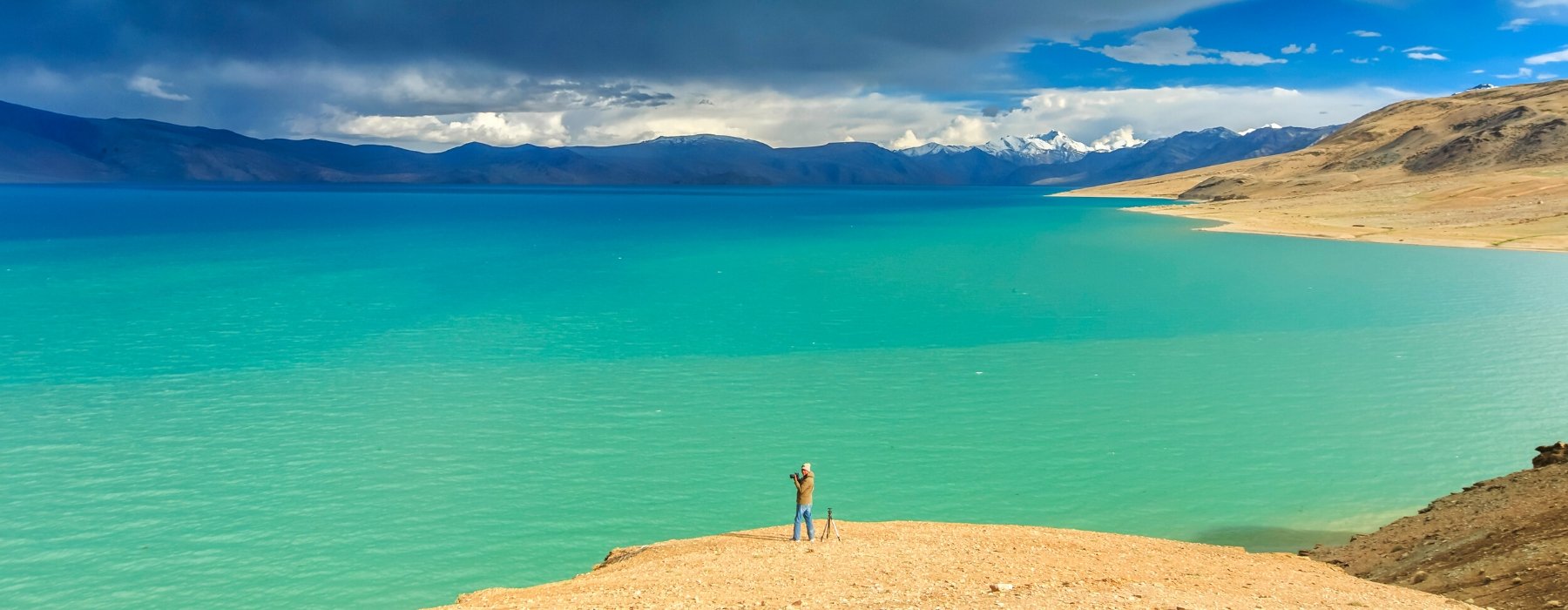
You’ll get up close and personal with the destinations and communities you travel through, seeing the cultural and historical highlights, natural wonders and wildlife, and local hidden gems.
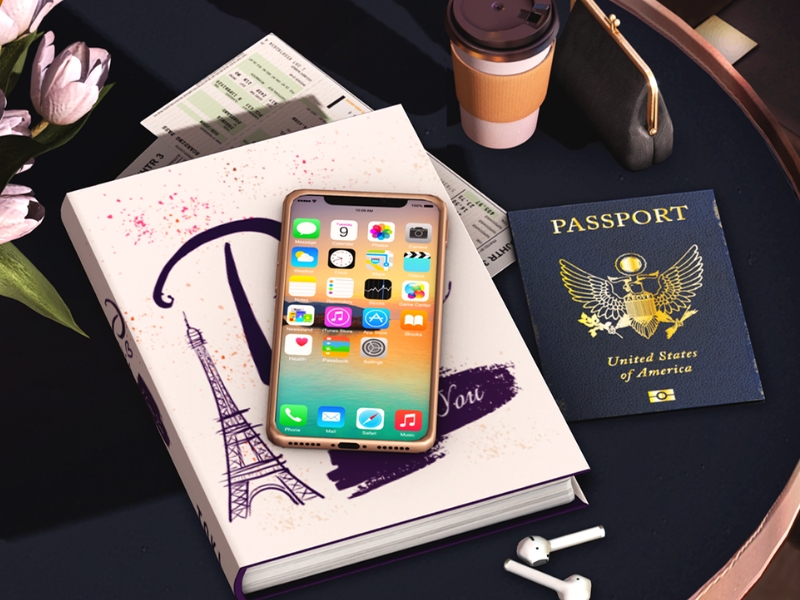
Peru is a country of basically free access. Most of the countries of America and Western Europe do not require a tourist visa to enter Peru, and the maximum length of stay granted by the authorities is 183 days (it cannot be extended). For a stay for a longer period with other objectives (business, study, work, etc.) it is necessary to previously request the corresponding visa from the Peruvian consulates.
To enter Peru it is an essential requirement to present a valid passport with a minimum validity of six months from your entry into the national territory. Citizens of Argentina, Brazil, Paraguay, Uruguay, Ecuador, Colombia, Bolivia and Chile can enter with their national identification document.

Traveling is one of life’s great pleasures and what most of us dream to do at one time or another in our lives. Discovering new cultures and visiting ancient ruins is what motivates us to travel. Peru has a rich and colorful history with many different regions to explore. While thinking of your Peruvian holiday you might want to also consider a group or individual tours in Peru. Both options are viable when traveling in Peru if you prefer the company of other people when you travel then a group tour will be for you. You’ll always have someone to keep you company along the route, but you don’t always have to walk together. Wherever possible your Andean Great Treks leader will allow everyone to walk at their own pace, regrouping regularly along the route.
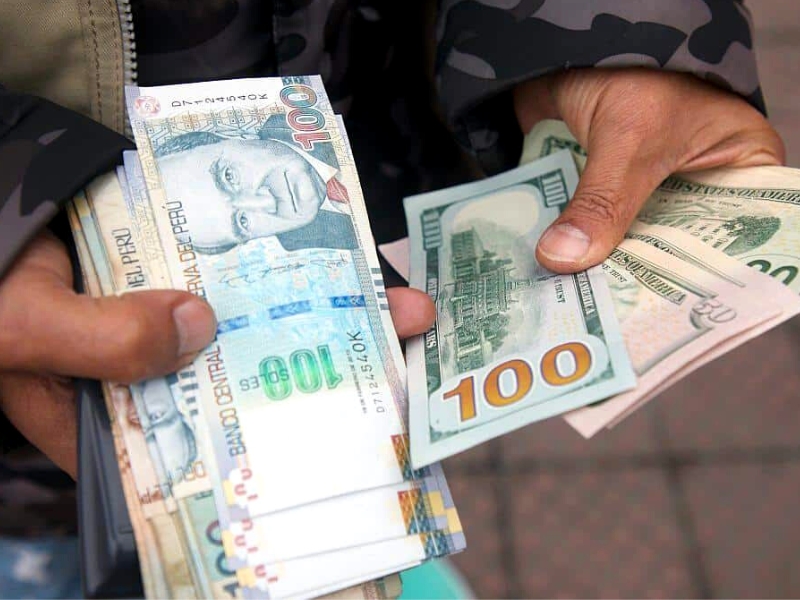
The currency in Peru is the Sol. It doesn’t take long to get used to it. There are just over three Soles to the US Dollar (USD), around three and a half Soles to a Euro (EUR) and just over four Soles to the Pound (GBP). Rounding up helps you make quick conversions when deliberating prices and making payment. While some businesses accept US dollars and some ATMs allow you to withdraw it even, it is much easier to pay for day-to-day things with Soles including food and drink, shopping at local markets and entry to local attractions. There are ATMs in every major city in Peru and as a point of reference can also be found near each city’s Plaza de Armas (the main square). It’s highly unlikely that you will find any ATM in more rural areas including villages and small towns. The fee for withdrawing money at the Peru ATM is around $5-$7 per transaction. The maximum withdrawal is around $200 – $250 per transaction.
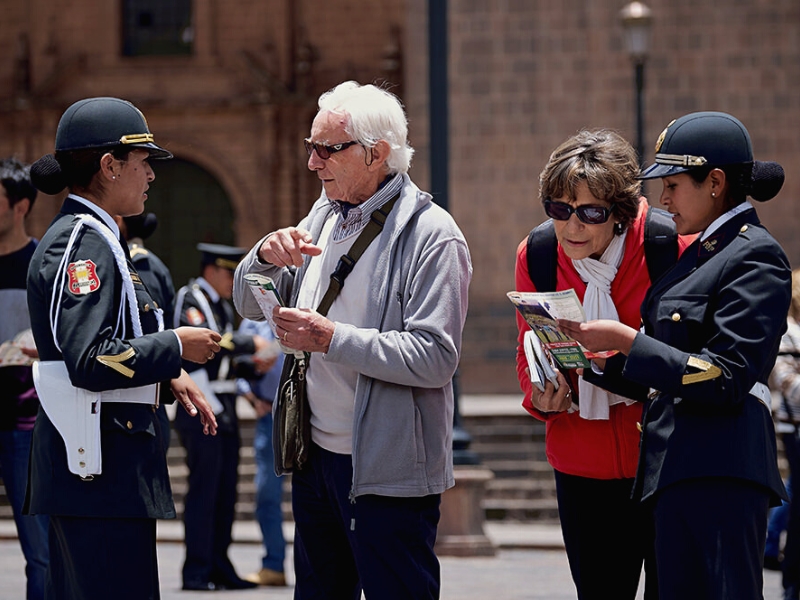
Like many other countries in developing destinations, the region’s beauty and uniqueness are countered by inequality and lack of investment. This has led to crime rates (mainly theft and scams) not being uncommon in the larger cities. We know this doesn’t sound very attractive, but it’s important to mention it regardless. Most experienced and well-traveled visitors will understand this well and not be too concerned. However, having said this, it is our duty to take care of you during your visit. That’s why we present you here with a few recommendations to be extra safe. Avoid walking alone at night on empty streets. Don’t flaunt valuables! If going for a walk or going on public transport, be sensible and avoid showing off expensive items such as expensive watches and jewelry. Be careful of pickpockets! Don’t leave your bags anywhere that doesn’t look safe, and make sure to take them with you.
Most people can start to feel the effects of altitude at over 2000 m (6561 ft) regardless of age, gender or fitness level. While our leaders have basic first aid training and are aware of the closest medical facilities, it is very important that you make yourself aware of the cause and effects of travelling at altitude, monitor your health and seek assistance accordingly. It’s important to take it easy, drink plenty of water and speak to your group leader at once if you feel unwell.
We recommend seeing your doctor if you have any health concerns before undertaking the trip. Particularly if you have a pre-existing medical condition or take any medication.
Absolutely. All passengers travelling with Andean Great Treks are required to purchase travel insurance before the start of your trip. Your travel insurance details will be recorded by your tour guide on the first day of the trip.
Travel insurance is compulsory on all our trips for those travelling internationally. We require that at a minimum you are covered for medical expenses including emergency repatriation. If you are travelling within your home country or region please confirm before travel that you are entitled to access the public medical system easily should an accident occur. We strongly recommend all travellers have a policy that also covers COVID-19, personal liability, cancellation, curtailment and loss of luggage or personal effects.
No vaccines are required in order to enter Peru but some are recommended for protection against disease. Visit your doctor or travel clinic for advice and make sure to schedule vaccinations 4-6 weeks before your departure date, as some require time to become effective.
Recommended travel vaccines for Peru
Drinking tap water isn’t recommended in Peru. For environmental reasons, try to avoid buying bottled water. Fill a reusable water bottle or canteen with filtered water. Ask your tour guide or the hotel where you’re staying where filtered water can be found. It’s advisable to avoid ice in drinks and peel fruit and vegetables before eating. There’s no need to worry about keeping your mouth closed while you shower, but if you have a particularly sensitive stomach, you may wish to use boiled or filtered water to brush your teeth or wash fruits and vegetables.
When ordering cocktails or smoothies, try to avoid drinks with ice. You can always ask the waiter or vendor if they use filtered water to make ice, but if you’d rather not risk it, just order your drinks ‘without ice’. Single-use water bottles contribute to a huge environmental problem, so your best bet is to bring a portable water filter or water purifying tablets, and a large reusable bottle to refill at canteens or hotels. Brands like Steripen sterilize water using UV, while bottles from Sawyer remove most bacteria through an in-built foam purifier.
Water safety tips for Peru
Here are some handy tips to follow when it comes to drinking water in Peru:
Most hotels, large retailers and tourist attractions accept credit cards but will usually charge a fee (about 5% to 7%) for using them. Make sure you carry cash for when you’re dealing with small vendors, family-run restaurants and market vendors.
There are many situations where you might want to use your mobile when travelling. It could be to call a hostel to book a room, arrange a meeting point for breakfast with your new travel friends, or contact loved ones in an emergency.
Mobile phone coverage is generally good in Peru’s cities, but may not be available in more remote and mountainous areas. You will be able to use your mobile/cell phone while in Peru, but only if you have activated global roaming or purchased a local SIM card. If you choose to activate global roaming, don’t forget to check with your provider as to what costs will be incurred to avoid any unwanted surprises when you get your phone bill – it’s often painfully expensive! You should also make sure you check that your phone is unlocked before leaving home or the local SIM may not work overseas.
Buying a local SIM in Peru
Many travellers prefer to buy a local SIM card instead of a roaming plan as it works out much cheaper. You can buy a SIM card at most airports and phone retail shops in the bigger towns and cities. There are several carriers to choose from in Peru, with both prepaid and postpaid options available. Though postpaid is slightly cheaper, it may require a minimum commitment period, so you might be better off going with the prepaid option. As far as carriers go, Movistar, Entel and Claro are some of the biggest and will offer you decent coverage, though it may be poor or cut off completely in more rural or mountainous areas like the Andes.
Peru has a mix of both squat toilets and western-style flushable toilets. It’s a good idea to carry your own toilet paper and hand sanitizer, as they are not always provided. Some public toilets charge a small usage fee. Expect to use squat toilets if travelling on the Inca Trail.
ATMs can be found in most of Peru’s major cities and tourist areas. ATMs are far less common in rural areas and small villages so have enough cash to cover purchases when travelling away from the larger cities.
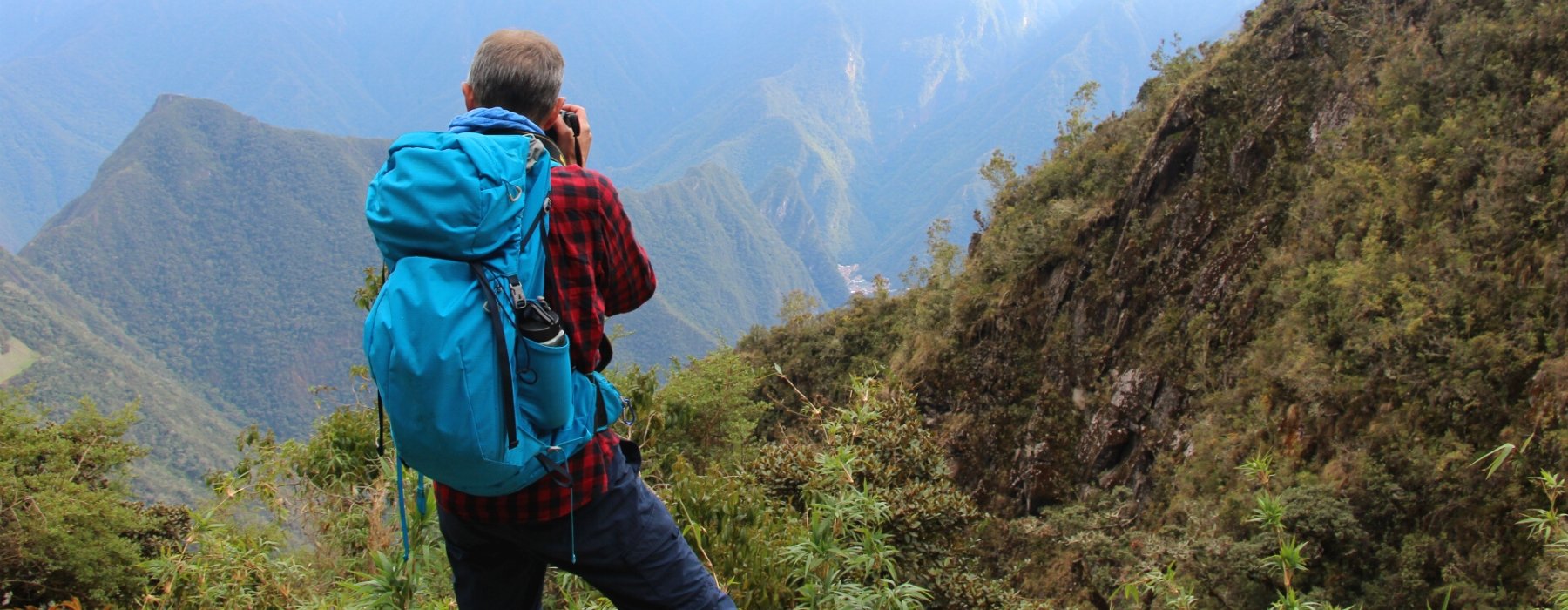
Every Andean Great Treks holiday has been thoughtfully planned and crafted by our specialists. They draw on their own extensive travel experience and the guidance and expertise of our local partners to create superb holidays. Our specialists are committed to making every aspect smooth and enjoyable; they genuinely want to ensure that the holidays they create leave you with wonderful lasting memories.
Every Andean Great Treks traveller is accompanied by an experienced tour guide, you will be immersed in Historic cities, ancient ruins and unfamiliar landscapes are all brought to life by our carefully selected local guides. They want to share their expertise and help you make your own discoveries too; their sole mission is to ensure you enjoy every moment.
Giving you the freedom to make your holiday even more memorable. We know how much our customers look forward to their holiday and we pride ourselves on the choice and flexibility that we offer to enhance every aspect of your experience. Whether it’s getting to the airport, upgrading your room or booking an additional excursion, we can help.
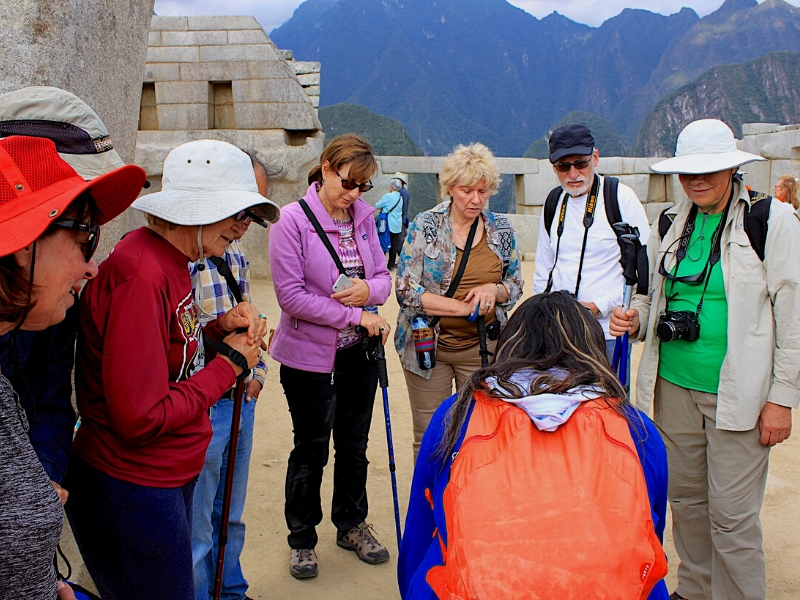
Our guides are the stars of the show; it is their unrivalled knowledge, passion and expertise that will transform your tour experience from good to truly extraordinary!
Because the have grown up in the area and know it like the back of their hand, so they can help you experience whichever aspects most interest you. They’re passionate about sharing their corner of the world with you, and as you explore together, they’ll open your eyes to the intricate details, provide background to enhance your understanding of what you’re seeing, and share stories that will bring everything to life.

“Your inspiration for a trip can be a single word or a highly evolved outline, but it’s the conversations we have that help us understand the experience you’re looking for. Meanwhile, I’m looking back on the time I spent at the destination.
‘The great thing about working with a specialist at Andean Great Treks is how they take your complete jumble of ideas and turn them into something absolutely spectacular.’
As you begin to share your ideas with your specialist, it will connect them immediately back to a time in their own travels. Conjuring a picture of the rest time they made that same discovery, reminding them how it felt.
Your specialist understands that, when the journey is right, it has the power to excite your emotions in the most profound ways after all, that was the effect on them.
They carry a treasure box of moments, captured over many journeys, into every suggestion they’ll share with you, as they ask you how you want to feel on your trip.

EXPERIENCES THAT CALL TO YOU
It’s what you do in a destination that helps bring it to life. It’s why we strive to choose experiences that help you connect to a place, absorbing a little of its complex character. Wherever your passions lie, we’ll recommend experiences that speak to you, and we’ll recommend the guide or local expert who’s most qualified to help you explore. Packing your holiday full of special experiences means some early starts and long days, but you can be sure that you’ll return home with many incredible memories! Read our Tours and check the Physical Ratings to see if the pace and activity levels are right for you.

STAYS WITH DIFFERENCE
We know that where you stay is a cherished part of your travels. So, we go to great lengths to find places to stay that exceed expectations, or go above and beyond the ordinary, whether in their character, hospitality, or location. Over the years, we’ve discovered the very best properties, trying and testing them, so we can choose the right one for you. We’ve nourished long-standing relationships with these establishments and the people who founded them, and we’ve stayed there many times often, we’ll even know which rooms have the best views (and reserve them for you).

Our style of travel — authentic, thoughtful, and focused on building meaningful connections to the people and places you visit — is inherently respectful and considerate of the destinations we love. We design each aspect of your trip exactly as you want it, which includes its sustainability. That might mean choosing a train journey instead of a flight, staying at eco-friendly wildlife lodges, or opting for experiences that give back to the communities you’re visiting. The choice is yours.
Responsible travel has always been at the heart of what we do. First and foremost, because it gives you the best experience, but, also because it helps to preserve the communities and landscapes you visit. This isn’t new for us we collaborated with local communities and outside experts so we can grow to be better ambassadors.
The most authentic and interesting experiences often directly benefit the local people. We prefer to buy local products that are produced in the organic farms of the Sacred Valley, we also have alliances with local artisan organizations who provide us with souvenir items for our clients, your money directly benefits the local economy.
Our style of travel — authentic, thoughtful, and focused on building meaningful connections to the people and places you visit — is inherently respectful and considerate of the destinations we love. We design each aspect of your trip exactly as you want it, which includes its sustainability. That might mean choosing a train journey instead of a flight, staying at eco-friendly wildlife lodges, or opting for experiences that give back to the communities you’re visiting. The choice is yours.
Responsible travel has always been at the heart of what we do. First and foremost, because it gives you the best experience, but, also because it helps to preserve the communities and landscapes you visit. This isn’t new for us we collaborated with local communities and outside experts so we can grow to be better ambassadors.
The most authentic and interesting experiences often directly benefit the local people. We prefer to buy local products that are produced in the organic farms of the Sacred Valley, we also have alliances with local artisan organizations who provide us with souvenir items for our clients, your money directly benefits the local economy.
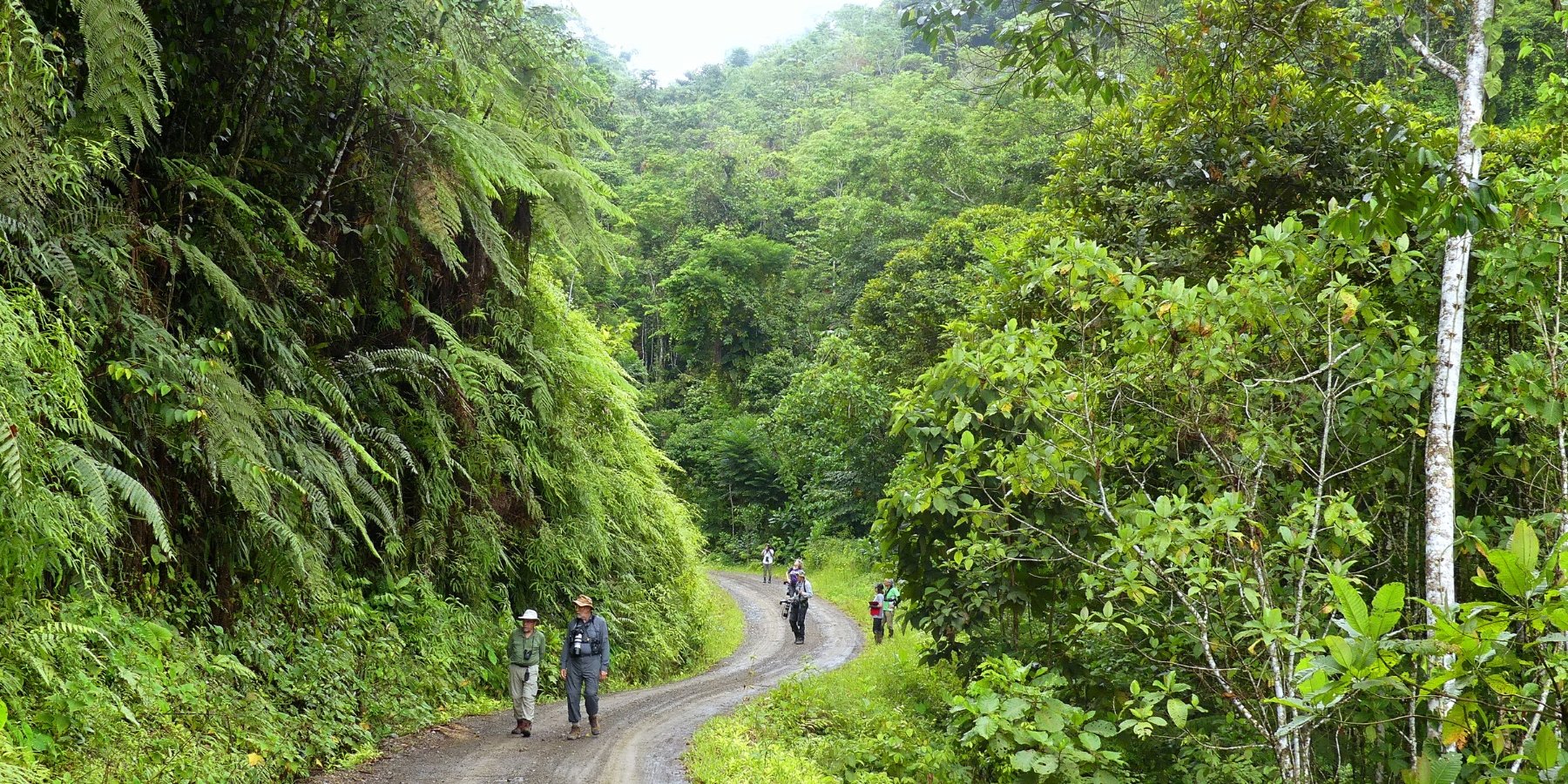
‘There’s a saying: we don’t inherit the Earth from our ancestors, we borrow it from our children. When we show you our country, this philosophy guides everything we do. It’s our responsibility to preserve the environment and wildlife, and support communities. That means using slower modes of transport, like cycling, employing local people, and working with communities who’ll benefit directly from your visit. This also gives you the best, most authentic impression of the places we want to share with you.
We prefer to buy local products in ecological bags, to avoid the use of plastic bags, likewise we teach the use of soaps and ecological products in each tour that we organize. We also work on reforestation projects with local communities who take care of landscape resources such as communal reserves, national parks.
‘There’s a saying: we don’t inherit the Earth from our ancestors, we borrow it from our children. When we show you our country, this philosophy guides everything we do. It’s our responsibility to preserve the environment and wildlife, and support communities. That means using slower modes of transport, like cycling, employing local people, and working with communities who’ll benefit directly from your visit. This also gives you the best, most authentic impression of the places we want to share with you.
We prefer to buy local products in ecological bags, to avoid the use of plastic bags, likewise we teach the use of soaps and ecological products in each tour that we organize. We also work on reforestation projects with local communities who take care of landscape resources such as communal reserves, national parks.
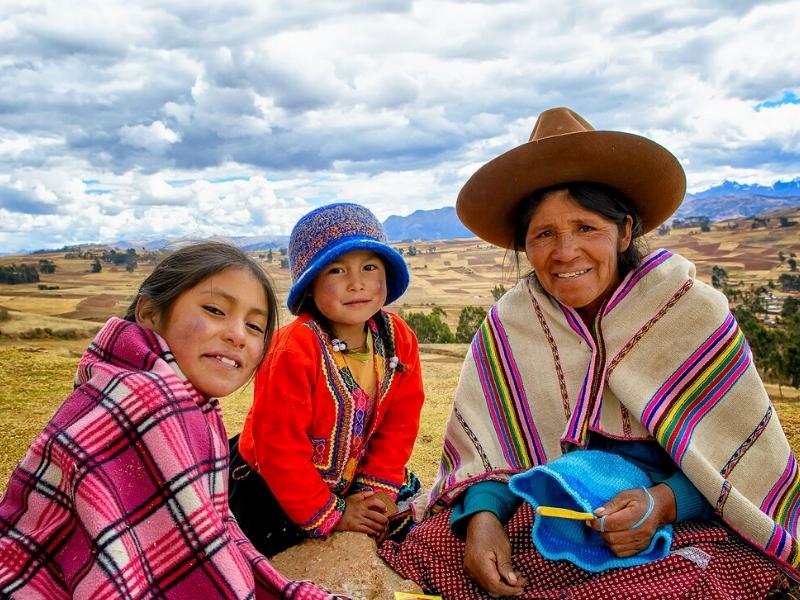
The top sights of Peru will leave all the family thrilled by the scenic grandeur, ruined temples, colonial cities, amazing inca trail to Machu Picchu, the Inca Lost City, once buried under the tropical forest which surrounds it.

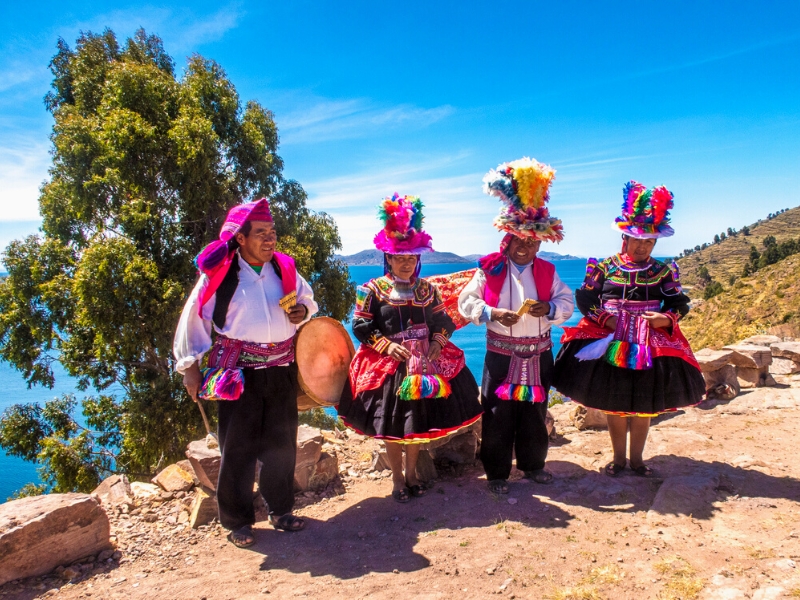
On this 2-day tour to Lake Titicaca, you will be able to visit the main islands where Andean communities still live maintaining their ancient customs, such as textiles, agriculture, and ancestral rites inherited from the Incas. Enjoy beautiful sunsets surrounded by the royal mountain range and the highlands.


Enjoy an incredible vacation, in the heart of the Inca empire, Cusco, our travel program will take you to the most famous tourist attractions of Cusco, such as the Sacred Valley of the Incas, Machu Picchu, in very cozy hotels.
